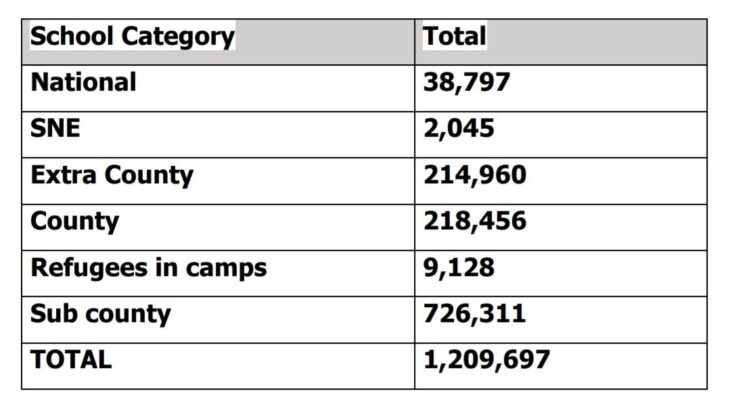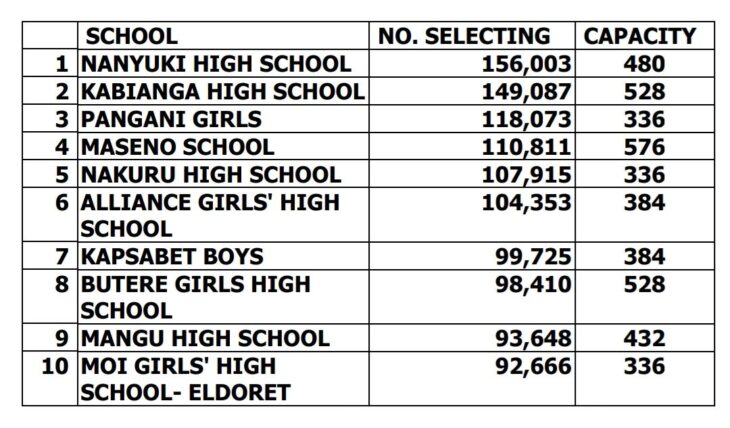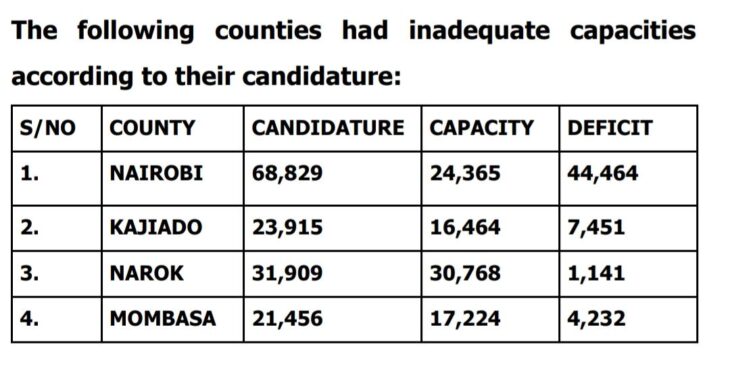NAIROBI, Kenya, Apr, 11 – The Ministry of Education has completed the placement of the 2021 Kenya Certificate of Primary Education (KCPE) candidates in secondary schools.
Education Cabinet Secretary Professor George Magoha officially launched the placement exercise on Monday, while calling on parents to access instructions on how their children will join secondary school as well as identifying which school they have been placed at by sending the candidates’ index number to 22263.
“As such, there will be no selection of Form One candidates at sub-county level as was the case in the past. Candidates, parents, or guardians can now access joining instructions that are available online for all categories of schools through the Ministry’s website https://www.education.go.ke/online-services/formone-selection,” said Magoha.
Schools can now access and download their selection lists by logging onto the National Education Management Information System (NEMIS) portal.
In line with the government’s policy of 100 per cent transition to secondary school, all the 1,225,502 candidates that sat for the KCPE exams have secured places in the country’s 9,200 public schools.
The 2021 KCPE candidates are the fifth cohort of learners to be admitted to secondary school under the policy.
“I urge all stakeholders to not drop the ball in implementing this policy directive even in the face of a few challenges that stand in the way. These challenges include the negative effects of insecurity in some parts of the country, teenage pregnancies, long distances to school, and poverty, especially during the COVID-19 era,” said Magoha.
How was the Placement Conducted?
According to Magoha, the ministry of education strictly applied the principles of merit, choice, and equity in placing candidates in each school category.
Of the 1,225,502 candidates that sat the 2021 KCPE, 900 were inmates, 573 were overage candidates, 33,627 were underage (12 years and below), 9,128 were candidates from refugees in camps and 2,819 are Special Needs candidates.

In the placement, the majority of candidates who scored 400 marks and above were placed in National or Extra County schools of their choice.
The Special Needs candidates were also placed in the regular schools of their preference, while others were placed in special schools based on their disability categories, on merit and choice.
“In this year’s selection, just like last year, we have applied the affirmative action provision by opening opportunities for a number of children from slums. The candidates were placed first, thus guaranteeing them their first choices in national schools. Through this, we managed to place 567 learners to their first-choice national schools. A further intervention was done by giving an additional 314 places in National and Extra County schools,” said Magoha.
The slums identified under this arrangement were from Thika, Nyeri, Kisumu, Nairobi, Mombasa, Nakuru and Eldoret urban centres.
“With such interventions, a candidate like Kimberly Grace with 368 marks From Mji wa Huruma slums is joining The Kenya High school. Grace is just one among many similar cases,” said the CS.
Concerns were meanwhile raised over the candidate’s school choices with Magoha saying a big number of candidates did not receive proper guidance and direction when choosing schools.
As a result, some schools are reported to have attracted far many applicants against their capacities.

Even as some schools were praised to have gone out of their way to expand capacity in support of the 100 per cent transition policy, such as St. Albert Ulanda Girls and Sironga Girls which are expected to admit 864 and 816 candidates respectively – Some counties are said to pose certain challenges when it comes to placement due to inadequate capacities according to their candidature.

“I call upon all leaders from those areas to address the perennial deficit in capacity. I commend Kilifi and Kwale for addressing their deficit this year. The Ministry has placed a number of learners in boarding schools outside of their counties due to these deficits,” the Cabinet Secretary Magoha.
The form one students are now expected to report to school in May, 3,2022 with principals directed not to admit any student in NEMIS until they physically report to school. Education field officers are expected to monitor the exercise.
Want to send us a story? Contact Shahidi News Tel: +254115512797 (Mobile & WhatsApp)


